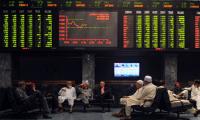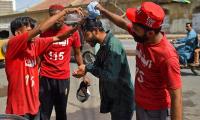Efforts towards revitalising endangered languages have gained global significance. There are now hundreds of endangered languages. Though languages died in all epochs, the rapid decline of diversity is very unique to the modern era, rivalled only by a similar decline during the agricultural revolution some 10,000 years ago. Consequently, many communities in the world are confronted with the loss of their languages which have been an integral part of their identity.
The awareness towards revitalising languages has its roots in the socio-cultural shift that happened since the end of the cold war when hegemonic patterns, which had actively and explicitly suppressed cultural diversity, began to shatter, and as a result ethnic groups and minorities began to assert themselves and demand their territorial, political and cultural rights. This necessitated a rethink in human rights too.
An example of this is Unesco’s Declaration on Cultural Diversity (2001) where Article 5 states, ‘‘All persons should, therefore, be able to express themselves and to create and disseminate their work in the language of their choice, and particularly in their mother tongue; all persons should be entitled to quality education and training that fully respect their cultural identity.’’ Similar proclamations can also be found in the declarations of other national and transnational organisations.
Another force giving impetus to this concern is globalisation which is a process of international assimilation of economic life but which is also accompanied by the integration of neoliberal political structures. Since globalisation has transformed the traditional political and economic barriers among nations, the exchange of information, goods, money, services and people has grown between regions.
Whereas the modernising and assimilatory effects of globalisation are facts, it has also triggered a sense in communities to reassert their unique cultural identity. There has been a greater interplay between the ‘traditionalist’ and ‘modernist’ tendencies within communities and regions which consequently foster greater efforts for language revitalisation since language is undoubtedly the most powerful and obvious indicator of group identity and can connect both the ‘traditional’ and ‘modern’ constituencies within a community.
Language revitalisation is actually reversing or counter-balancing the societal, political, economic and historical factors that cause language loss. Therefore, a language revitalisation programme does not work in isolation. It requires the understanding of a complex set of factors that leads individuals of a community to make choices about their language use. It requires an understanding of diverse reasons such as attitudes about a language within a community, the socio-cultural and political contexts in which speakers of one language interact with others, the cultural values associated with a language, and regional or national policies effecting choice and teaching of a language. An effective language revitalisation strategy must identify these issues and understand how they interrelate, and impact the patterns of language use.
The variables a language revitalisation programme needs to consider are of an external and internal nature. The external variables are attributable to different spheres of influence ie local, regional, national and international.
At the local level, this variable means how a language is regarded by its neighbours who speak different language(s). This is a language attitude external to the speakers. Such attitude also exists at the national or international level, which influences language policies regionally or nationally.
The regional level is a geographically distinct territory with a political basis. Examples could be Gilgit-Baltistan, AJ&K, and the four provinces in Pakistan. Here two crucial variables need our attention while planning a language revitalisation strategy: the role of regionally dominant languages and language density. In such a situation, the local communities usually finds itself in a tiered system of language choices based on influence of languages. The local language is one tier, the locally dominant language is another, the third is the national language while a language of international access is the fourth one. This is very common in Pakistan.
However, in some rare cases the tiers become more than four. For instance, a speaker of the Ushojo language in Bishigram finds himself in five tiers: Ushojo, Torwali, Pashto, Urdu and English. However, he uses both Ushojo and Torwali for social interactions in his village as their domains are limited both regionally and functionally. But for a speaker of the Cherokee these tiers would be of two as his national and global language coincide, which is English. A Torwali speaker has to use Torwali at the village level, Pashto at the regional, Urdu at the national while English at the global level.
Language density is closely related to multilingualism and has significant impacts on language vitality. This is important in planning language revitalisation programme, and needs much consideration.
The national level is the context of the geopolitical construct that has high influence in most part of the world – though in most countries, including Pakistan after the 18th Amendment, policies that impact local languages operate at the regional level as well. The issues at this level are educational policies, national attitudes towards multilingualism, language policies, regional autonomy and federal support.
Language and educational policies shape patterns of language use in an array of domains and determine teaching of language(s) in educational institutions. These impact the vitality and maintenance of local languages greatly and are often the invisible drivers to foster language attitudes at the micro level, internal to the community, too. Language attitudes at the national level too are fostered by political, economic, historical and cultural reasons.
Countries differ greatly in their national language attitudes. For instance, the US has not developed any official language policy yet it has typically promoted English in the educational system. On the other hand, Pakistan has maintained English as the official language despite proclamations in the constitution for Urdu to be so.
Within a federation, more autonomy is given to regions over education, language, development of infrastructure, allocation of resources et al. In nations where much autonomy is granted to the regions, it has impacted language revitalisation greatly – though in some cases to the benefit of the dominant regional language(s). Regions are allowed to choose the language(s) of instruction at schools and in the media. These endeavours are usually positive for the vitality of the local languages. An example of such arrangement is the passing of the KP Promotion of Regional Languages Authority Act by Khyber Pakhtunkhwa in 2012 which allows inclusion of five regional languages – Pashto, Hindko, Seraiki, Khowar and Kohistani – to be gradually taught at the primary levels.
Global variables, too, cannot be overlooked while designing a language revitalisation programme because they are powerful forces impacting language choice and use. The most obvious example of that is also globalisation. The globalisation of English is actually due to the growing economic integration which needs international access languages, not necessarily one language. Such other languages could be English, Mandarin, Spanish, or maybe Arabic as well, because each has transnational influence in the globalising world.
The writer heads an independent organisation dealing with education and development in Swat.
Email: ztorwali@gmail.com
Approximately one in three women worldwide has experienced either physical and/or sexual intimate partner violence ...
Prime Minister Shehbaz Sharif has laid the foundation of a Daanish school in Islamabad’s Kuri Village
Ahfaz-ur-Rahman was also an Urdu poet of considerable reputation with his poems concerning a wide range of political...
In this picture taken on April 16, 2023, people throng a market area during shopping in Lahore. — AFPCare to cast...
A representational image of a transmission tower, also known as an electricity pylon. — AFP/FileLower electricity...
Pakistan's third Governor General Ghulam Muhammad. — National Portrait Gallery website/FileAs discussed in the...







